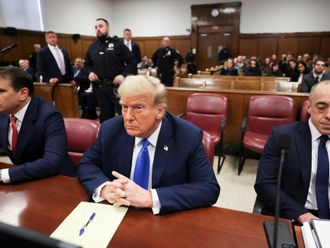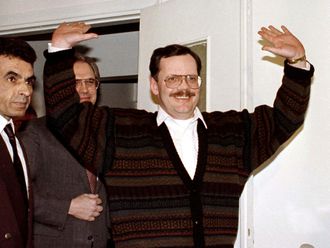Washington: US President Barack Obama unveiled plans Monday to spend at least $50 billion to expand and renew US roads, railways and airports, in a fresh bid to fire up sluggish economic growth.
Obama, under intense pressure over a sputtering economy ahead of November's mid-term congressional elections, in which his Democrats fear heavy losses, was set to formally announce the new funding in a speech in Wisconsin.
The event, marking Labor Day, the traditional kick-off for US election campaigns, heralds a week in which Obama also travels to another struggling state, Ohio, and holds a press conference in a bid to ease his political woes.
The White House hopes to win quick passage of the $50 billion-measure, which would be the "front-loaded" first part of a broader measure to reauthorize transportation funding over the coming six years.
"We'd like to pass this as quickly as possible," a senior administration official told journalists ahead of the president's announcement.
"The economy needs additional investment as quickly as possible, but we want to do something that will help the economy over the next six years."
The official said the new projects would be funded, without increasing the deficit, by ending various tax breaks for oil and gas companies.
This would close "some of the tax loopholes for oil and gas companies that get subsidies from taxpayers that they don't need," the official said, while noting that the president was open to other funding proposals.
The plan, to be announced at the Milwaukee Laborfest, a union gathering, also targets improvements to the US air traffic control system, an acceleration of high-speed rail projects, and establishes an "Infrastructure Bank" to coordinate federal funding and planning for projects.
It calls for the rebuilding or restoring of 150,000 miles (240,000 kilometers) of roads; adding 4,000 miles (6,400 kilometers) of rail and renewing 150 miles (240 kilometers) of runway.
Critics have long complained that the US highway system is crumbling and suffers from underinvestment, so Obama will target modernizations that could quickly employ jobless workers while improving the US transportation backbone.
The plan also envisages an overhaul of technology used in the crowded US air traffic control system, including the use of satellite surveillance, which it said could reduce travel delays and airport noise.
Over the long term, Obama wants to make "a sustained and effective commitment to high-speed rail," the official added.
It appeared unlikely however that Obama could get the plan passed through Congress before the mid-term elections, which are effectively a referendum on Democratic economic management and a 9.6 per cent unemployment rate.
Opposition Republicans who slammed Obama's $800-billion-stimulus plan as a failure are also likely to hammer the proposed new investment as another example of the government doling out taxpayer dollars to little effect.
On Wednesday, Obama heads to another struggling state, Ohio, where he is expected to unveil another plank of his revised economic strategy: a series of tax breaks for small businesses worth 100 billion dollars.
On Saturday, he vowed to expand a prosperous middle class and help his compatriots achieve the American Dream.
"This Labor Day, we should recommit ourselves to our time-honored values and to this fundamental truth: to heal our economy, we need more than a healthy stock market; we need bustling main streets and a growing, thriving middle class," he said in his weekly radio address.
The comments came after a new Labor Department report released Friday showed the economy lost 54,000 jobs last month and the unemployment rate edged up to 9.6 per cent.
Although the job losses were much less than the 120,000 slump expected by Wall Street economists, hiring was not substantial enough to help millions of crisis-hit Americans to return to work.
The government last month slashed second-quarter growth figures to 1.6 per cent from 3.7 per cent in the first quarter, stoking fears of sluggish future expansion and even a double dip recession.












